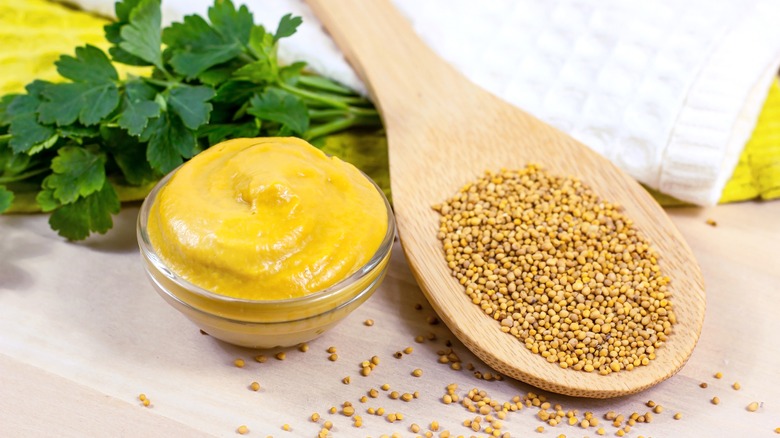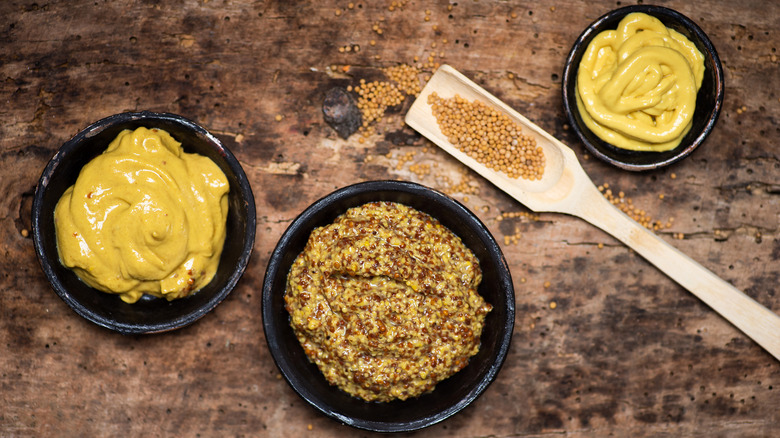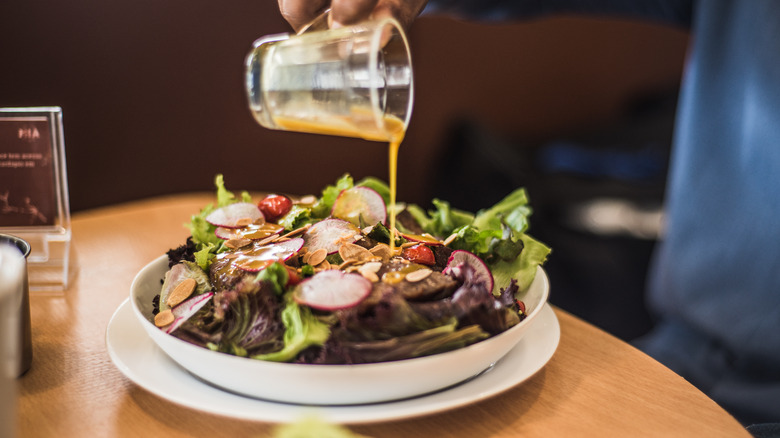Why You Should Avoid Using Yellow Mustard In Your Salad Vinaigrette
A salad's toppings are pertinent to its overall flavor. But part of the reason restaurant-style salads are so delicious is because of the tangy dressing that coats each veggie. While purchasing a store-bought salad dressing might be easier, it's worth taking the extra time to create your own homemade vinaigrette. If you do, though, keep in mind that you'll need something to emulsify the dressing, such as mustard — but try to avoid using yellow mustard.
Most vinaigrettes contain some blend of fat and acid, such as olive oil and vinegar or mayonnaise and lemon juice. And they're often paired with something a little spicy, such as mustard, because it offsets the rich, fatty flavors and also acts as an emulsifier to help bring the dressing together cohesively when it's mixed (fat and acid don't naturally combine so an emulsifying agent like mustard helps this process). But with so many mustard varieties on the market, it's hard to know which one works best. A quick rundown: Dijon and whole grain are the best options, while yellow mustard should be avoided.
Yellow mustard doesn't have the right flavor for dressings
Mustard is meant to have a bite to it, and Dijon has a spicy natural flavor that works well when paired with fattier ingredients. Whole grain mustard, on the other hand, has a similar flavor but is milder than Dijon given that its seeds haven't been fully ground. But yellow mustard, which might pair perfectly with a little ketchup on a stadium hot dog, doesn't work at all in dressings. Its flavor is too vinegar-heavy, so when paired with additional vinegar or acid, it's a little too much.
Beyond the taste, yellow mustard loses something called mucilage during the milling process. Mucilage is a thin, jelly-like coating on the outside of mustard seeds that actually works as the emulsifier to blend the fat and vinegar. On the other hand, since Dijon mustard is whole grain (but ground finely to release the mucilage), it's typically the best option for a vinaigrette.
How much mustard belongs in a vinaigrette?
Mustard has a strong flavor, so the last thing you want to do is overuse it. If you're making a decent amount of dressing and using a cup of olive oil as the base, you'll want no more than about two tablespoons of mustard. This could vary depending on the other ingredients you use as well as your own preference. For that reason, you should start with just a tablespoon, then add more mustard to taste.
If you accidentally add too much, you don't need to throw the whole batch away. Just counteract it with a sweetener, such as honey, which will keep it balanced. You likely want to add a little honey or maple syrup anyway if you're using both mustard and vinegar in the dressing (or any other acidic liquid, such as lemon or lime juice), so just keep adding either one in small quantities until the dressing gets back to your desired flavor.


